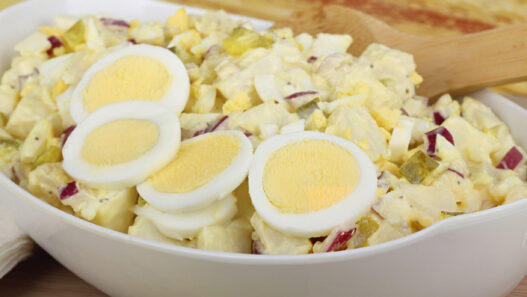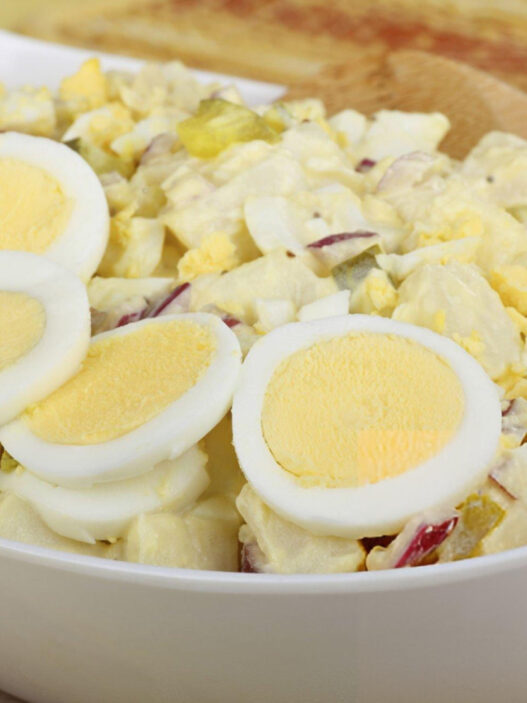A savory, satisfying twist on a classic breakfast favorite, this eggless tomato omelette offers a comforting and flavorful start to the day. It’s crisp on the edges, soft in the center, and bursting with the vibrant flavors of tomatoes, onions, and aromatic spices. Whether you’re seeking a meatless breakfast, a quick snack, or a light dinner, this versatile dish delivers on taste and texture without the need for eggs. Its heartiness, simplicity, and wholesome ingredients make it an instant favorite across all age groups.

Ingredients Breakdown
The beauty of this recipe lies in its humble yet robust ingredients. Fresh tomatoes and onions create a juicy, flavorful base, while finely chopped ginger and green chillies add a subtle kick of heat and warmth. Coriander leaves (cilantro) infuse the batter with a refreshing herbal note, making every bite bright and fragrant.
At the core of the batter is gram flour (besan), a protein-rich flour derived from ground chickpeas. It acts not only as the structural base but also lends a nutty, earthy flavor that deepens as it cooks. Gram flour crisps up beautifully when pan-fried, resulting in a golden-brown omelette with a satisfying bite. If unavailable, chickpea flour is an excellent alternative that performs just as well.
To enhance flavor complexity, a medley of spices is folded in—turmeric for color, red chilli powder for heat, garam masala for a warm, spiced undertone, and black salt for a subtle umami lift. Asafoetida (hing), though optional, adds a distinctive savory aroma, while baking powder helps to aerate the batter slightly, making it lighter and fluffier. A touch of oil is used for pan-frying, contributing to the crisp texture that defines this omelette.
Step-by-Step Preparation Guide
Begin by prepping the fresh ingredients. Finely dice the tomatoes, onions, green chillies, and ginger. Chop the coriander leaves as finely as possible so they blend seamlessly into the batter and distribute flavor evenly.
In a mixing bowl, add the gram flour and combine it with the chopped vegetables. Sprinkle in the spices, baking powder, and salt. Start pouring in the water gradually while whisking continuously with a wired whisk. This technique ensures a smooth, lump-free batter. The goal is a medium-flowing consistency—not too thick, not too runny. Adjust the water quantity based on the flour’s absorbency.
To cook, heat a skillet or flat pan over low to medium heat. Drizzle a thin layer of oil across the surface to prevent sticking and enhance crisping. Once the pan is hot, ladle the batter onto the center and spread it gently with the back of the spoon, just enough to shape it evenly without thinning it out too much. You can also tilt the pan to help the batter spread naturally.
Drizzle a few drops of oil along the edges and over the top. Allow the base to turn golden brown and crisp before flipping. The second side should cook until you see light caramelization and browned spots across the vegetables. For an extra crispy finish, flip once more and cook briefly. Repeat the process with the remaining batter, adjusting heat and oil as needed between batches.

Recipe Tips & Frequently Asked Questions
Choosing the right pan and oil for the crispiest omelette:
A heavy-bottomed non-stick skillet or cast iron pan ensures even browning. Use a neutral oil with a high smoke point like sunflower or canola oil for best results.
Adjusting spice levels to suit different palates:
Reduce green chillies or skip the red chilli powder for a milder version. Add more garam masala if you prefer a bolder spice profile.
Achieving the ideal batter thickness for even spreading:
The batter should be pourable but not watery. A flowing consistency ensures it spreads well without breaking apart on the pan.
Making it fluffier with baking powder or skipping it for a denser texture:
A pinch of baking powder creates slight lift and softness. Omit it if you prefer a denser, pancake-like texture.
How to make it allergy-friendly:
gluten-free, nut-free, or low spice: This recipe is naturally gluten-free if asafoetida is skipped. It’s also nut-free and can be easily made low-spice by adjusting seasonings.
Can this be prepared ahead of time and reheated later?
Yes, you can make and refrigerate the omelette. Reheat on a pan over low heat to regain crispness.
What’s the best way to store leftover batter?
Store unused batter in an airtight container in the refrigerator for up to 24 hours. Stir well before reuse.
Can I use a non-stick pan or a cast iron skillet?
Both work well. A cast iron skillet offers a crispier edge, while non-stick ensures easy flipping.
Can this recipe be doubled or halved easily?
Absolutely. Scale the ingredients proportionally based on your serving needs.
What to Serve With This Recipe
Tomato omelette pairs wonderfully with a variety of accompaniments. Serve it with freshly toasted bread, crusty buns, or soft dinner rolls for a satisfying, complete meal. For a traditional touch, offer sides of mint chutney or coriander chutney. Tomato ketchup adds a familiar, kid-friendly option, while a dollop of spiced yogurt brings a cooling contrast.
For a heartier spread, pair the omelette with sautéed greens, roasted baby potatoes, or even a simple vegetable salad. It also works beautifully in wraps—tuck it into flatbreads with a smear of chutney and crisp lettuce for a quick lunch.
Tasty Variations to Try
Feel free to experiment with textures and flavors. Add bell peppers, grated carrots, or shredded spinach to the batter for extra color and nutrition. You can also pour the batter into a mini pancake pan to create bite-sized omelettes—ideal for brunch spreads or kid-friendly snack boxes.
For a creative twist, layer the cooked omelette in sandwiches with slices of cheese, onions, and cucumber. It also works well rolled up in tortillas or wraps with sauces and pickled vegetables for a satisfying handheld snack.
This tomato omelette is a wholesome, fuss-free recipe that brings bold flavor and satisfying texture in every bite. With minimal ingredients and maximum taste, it’s a go-to option for busy mornings, quick lunches, or simple dinners. Crispy, flavorful, and endlessly adaptable, it’s a dish that proves comfort food can be both easy and exciting.

Ingredients
1 cup gram flour (besan) or use chickpea flour as an alternative
1 cup finely chopped tomatoes (or 2 medium ripe tomatoes)
⅓ cup finely chopped onions (or 1 medium-sized onion)
1 teaspoon finely chopped ginger (about 1-inch piece)
1 teaspoon finely chopped green chillies or ½ teaspoon chopped serrano peppers
3 tablespoons finely chopped coriander leaves (cilantro)
¼ teaspoon turmeric powder (optional, for color and aroma)
¼ teaspoon red chilli powder or cayenne pepper
1 pinch asafoetida (hing) – optional, omit for a gluten-free version
1 pinch garam masala
¼ teaspoon baking powder – optional, for a lighter texture
⅛ teaspoon black salt – optional, for added flavor depth
Salt to taste
1 cup water (adjust as needed for desired batter consistency)
2 to 3 tablespoons oil (or as required for cooking)
Instructions
Preparing the Batter
Begin by finely chopping the tomatoes, onions, green chillies, and ginger. Set them aside along with freshly chopped coriander leaves.
In a large mixing bowl, combine the gram flour with the chopped onions, tomatoes, green chillies, and ginger. Add in the chopped coriander leaves.
Sprinkle in the spices and seasonings—asafoetida, turmeric powder, red chilli powder, garam masala, black salt (if using), and salt as needed. Stir in the baking powder for an airier texture.
Gradually pour in the water and begin whisking the mixture using a wired whisk. Stir continuously until you achieve a smooth, lump-free batter with a medium-flowing consistency. The amount of water may vary slightly depending on the texture and quality of the flour, so adjust accordingly.
Cooking the Tomato Omelette
Heat a skillet, non-stick frying pan, or tawa over low to medium heat. Drizzle 2 to 3 teaspoons of oil across the surface to prevent sticking.
Using a large spoon or ladle, pour the batter onto the hot surface. Gently spread the batter in a circular motion with the back of the spoon—avoid thinning it out too much. Alternatively, gently tilt and rotate the pan to spread the batter naturally.
Drizzle a small amount of oil (about ½ to 1 teaspoon) along the edges and over the top of the omelette to promote crispness.
Once the underside is golden brown and crisp, carefully flip the omelette. Continue to cook the second side until the vegetables show light caramelized spots and the omelette is evenly cooked through.
If needed, flip again to ensure both sides are crisp and golden. Repeat the process with the remaining batter to make more omelettes.
Serve hot with toasted bread slices, soft buns, or dinner rolls. Complement the dish with flavorful condiments like tomato ketchup, fresh coriander chutney, or mint chutney for a satisfying meal.

Tomato Omelette Recipe
Ingredients
- 1 cup gram flour besan or use chickpea flour as an alternative
- 1 cup finely chopped tomatoes or 2 medium ripe tomatoes
- ⅓ cup finely chopped onions or 1 medium-sized onion
- 1 teaspoon finely chopped ginger about 1-inch piece
- 1 teaspoon finely chopped green chillies or ½ teaspoon chopped serrano peppers
- 3 tablespoons finely chopped coriander leaves cilantro
- ¼ teaspoon turmeric powder optional, for color and aroma
- ¼ teaspoon red chilli powder or cayenne pepper
- 1 pinch asafoetida hing – optional, omit for a gluten-free version
- 1 pinch garam masala
- ¼ teaspoon baking powder – optional for a lighter texture
- ⅛ teaspoon black salt – optional for added flavor depth
- Salt to taste
- 1 cup water adjust as needed for desired batter consistency
- 2 to 3 tablespoons oil or as required for cooking
Instructions
Preparing the Batter
- Begin by finely chopping the tomatoes, onions, green chillies, and ginger. Set them aside along with freshly chopped coriander leaves.
- In a large mixing bowl, combine the gram flour with the chopped onions, tomatoes, green chillies, and ginger. Add in the chopped coriander leaves.
- Sprinkle in the spices and seasonings—asafoetida, turmeric powder, red chilli powder, garam masala, black salt (if using), and salt as needed. Stir in the baking powder for an airier texture.
- Gradually pour in the water and begin whisking the mixture using a wired whisk. Stir continuously until you achieve a smooth, lump-free batter with a medium-flowing consistency. The amount of water may vary slightly depending on the texture and quality of the flour, so adjust accordingly.
Cooking the Tomato Omelette
- Heat a skillet, non-stick frying pan, or tawa over low to medium heat. Drizzle 2 to 3 teaspoons of oil across the surface to prevent sticking.
- Using a large spoon or ladle, pour the batter onto the hot surface. Gently spread the batter in a circular motion with the back of the spoon—avoid thinning it out too much. Alternatively, gently tilt and rotate the pan to spread the batter naturally.
- Drizzle a small amount of oil (about ½ to 1 teaspoon) along the edges and over the top of the omelette to promote crispness.
- Once the underside is golden brown and crisp, carefully flip the omelette. Continue to cook the second side until the vegetables show light caramelized spots and the omelette is evenly cooked through.
- If needed, flip again to ensure both sides are crisp and golden. Repeat the process with the remaining batter to make more omelettes.
- Serve hot with toasted bread slices, soft buns, or dinner rolls. Complement the dish with flavorful condiments like tomato ketchup, fresh coriander chutney, or mint chutney for a satisfying meal.
Notes
- Batter Consistency: Ensure the batter has a medium-flowing consistency. If it becomes too thick, add a little water. If it’s too thin, mix in some extra gram flour to balance it out.
- Skillet: Use a well-seasoned skillet or non-stick frying pan to prevent the omelette from sticking during cooking.
- More Veggies: Enhance the nutritional value by adding grated carrots, spring onions, chopped spinach, or other greens. You can also include grated zucchini or bottle gourd (opo squash), but reduce the water in the batter as these vegetables release moisture.
- More Flours: For a variation in flavor and texture, mix in 1 to 2 tablespoons of all-purpose flour, whole wheat flour, or maize flour along with gram flour.
- Crispy Texture: To achieve a crispier finish, increase the fat content by using more oil, ghee, or butter during cooking. A cast iron skillet or cast iron tawa also contributes to a crunchier texture.
- More Healthy Variations: Add 1 tablespoon of nutritional yeast for a subtle cheese-like flavor. You can also include 1 tablespoon of ground flax meal for extra nutrition. For a more filling version, stuff the omelette with grated cheddar cheese or paneer. For a vegan alternative, try sautéed mushrooms or savory tofu as a delicious stuffing.
- Black Salt: Adding a pinch of black salt provides a slight sulfuric note reminiscent of eggs. It’s optional and can be skipped if unavailable.


















